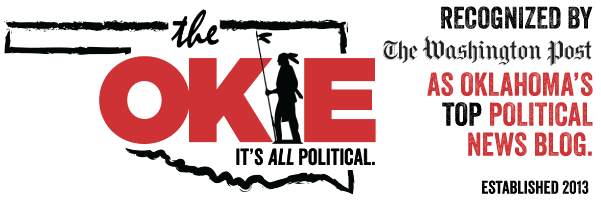Warmington: State Is Gambling With Its Tax Policy
Oklahoma is gambling with its tax policy
By Chad Warmington
When asked by a reporter if another round of oil and natural gas tax increases this year would hurt Oklahoma’s economy, Gov. Mary Fallin responded with, “I hope not.”
Shortly after, on Nov. 22, Fallin signed a third bill into law this year to increase the state’s gross production tax on oil and natural gas. This went largely unreported despite being the only tax increase approved during an eight-week special session.
Since January, the Legislature has doubled the effective GPT to 5.3 percent, according to the Oklahoma Tax Commission. Furthermore, around 97 percent of producing wells will be taxed at 7 percent by the end of this year.
It’s alarming that significant economic policy decisions this year have been based on hope and not facts. Here are a few facts Oklahomans should know:
• The oil and natural gas industry has been the brightest ray of hope for our economy this year. Between January and August, the industry created more jobs than any other industry in the state. These 5,000 new energy jobs mean more corporate and personal income taxes that the state collects, as well as increased local sales taxes from new economic activity.
• Our industry still has work to do to lead the state to a full energy recovery. Oklahoma’s drilling rig count recently hit a seven-month low, and our current rig count remains 40 percent lower than November 2014. Many factors stand in industry’s way, but the greatest hindrance is the unstable business environment created by action and rhetoric at the Capitol.
• Oklahoma’s current energy industry is best compared to Texas. The GPT rate in Texas is 4.6 percent for oil and 7.5 percent for natural gas, but the Texas comptroller publicly acknowledges that incentives for natural gas drive its rate down to 1.5 percent. This makes Oklahoma’s effective 5.3 percent rate today higher than Texas.
• Tax consumer groups continue to circulate a 2016 study by the state of Idaho that cites Texas’ full tax burden on production at 8.3 percent. The study achieved this number by marrying Texas’ GPT rate with the average property tax rate that the state also applies to production. The effective property tax rate in Texas is twice that of Oklahoma. To advocate for Texas’ method of taxing production would mean to advocate for a significant tax increase also to Oklahoma’s property owners.
• Instead of a property tax on production, Oklahoma levies corporate and personal income taxes on the oil and natural gas industry — unlike Texas. This method of taxation provides revenue for the state even when energy prices collapse. In 2015, when drilling activity hit a seven-decade low, corporate and personal income tax collections from the industry were more than $800 million, outpacing GPT revenue.
As the state continues to face a budget shortfall, no amount of tax increases on the oil and natural gas industry will fix this crisis. Instead, unpredictable policy threatens to drive away our current progress. One can only hope that Oklahoma’s elected officials are basing their policy decisions on facts and not hope.
Warmington is president of the Oklahoma Oil & Gas Association

